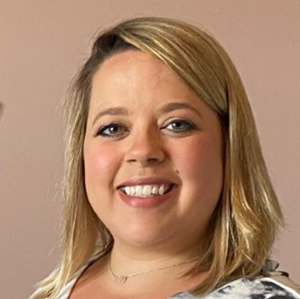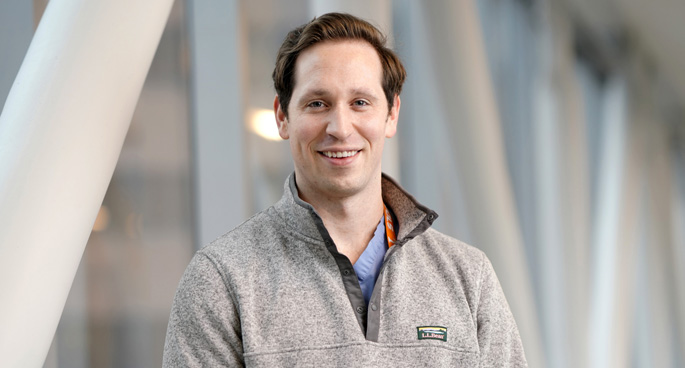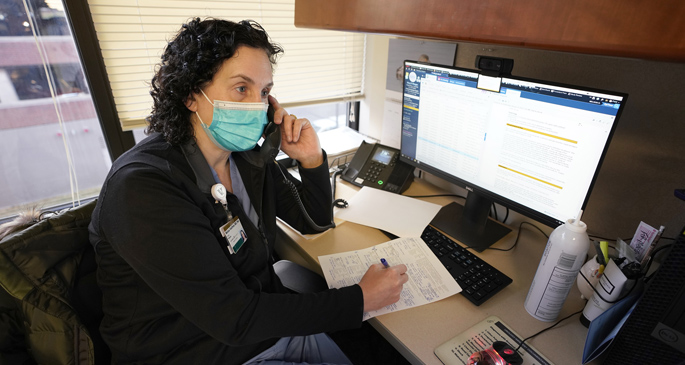
Physicians from all specialties across Vanderbilt University Medical Center are volunteering their time to communicate daily with family members of patients in the COVID-19 Intensive Care Unit. Their generous donation of time frees physicians and nurses in the unit to take care of the critically ill patients.
So far, more than 50 physicians, some of them Spanish speaking, have signed up to give two to three days of their time to round with COVID ICU physicians early each morning, get important details to communicate with the families and then call a family member for a daily update.
It’s emotional work, but something the physicians want to do to help those who are tirelessly working in the unit to care for COVID patients.
“Volunteering to provide modest assistance was intuitive and a privilege,” said Melissa Kaufman, MD, PhD, professor of Urology. “I did it out of sense of gratitude for the truly exceptional efforts of all of our physician and nursing colleagues who are constantly vigilant at the bedsides of these patients, and particularly in support of the house staff who have risen far above the call of duty time and time again, showing exceptional professionalism in the face of massive adversity.”
Fellows and residents from at least 12 programs, including Pulmonary Critical Care, Cardiovascular Medicine, Anesthesiology Critical Care, Anesthesiology and Surgery, as well as residents from other programs are providing additional support to the Medical Intensive Care Surge Team in caring for what Kaufman calls “extraordinarily complex patients.”
Kaufman volunteered Christmas Eve and Christmas day to speak with families going through “what has to be an intimidating and terrifying ordeal.” After rounding with the ICU team, she called family members to convey information and to find out if a family member would be visiting the unit that day. Family members can’t enter a patient’s room, but they can stand outside a window and communicate by iPad if the patient isn’t intubated or sedated.
Kaufman said the mood in the ICU is sobering. “The profound illness that this virus is inflicting on an incredible array of patients who may or may not have other medical conditions that would predispose them to the level of illness you witness in an ICU is simply staggering.”
She said she found that families of patients who have been in the ICU for a while have a good understanding of medical terminology. Those newer to the experience need more explanation.
“It was different for every family member I spoke with,” she said. “There were very few uplifting conversations, but they (families) have an incredible sense of optimism,” she said, often taking a morsel of positive information and holding on to that.
“They were certainly working through all the glimmers of hope, and I can see now, with perspective, that when you have a critically ill family member you can’t interact with directly, it’s the small gains that might change the perception of the family member as to the opportunity for potential recovery. These are very small and incremental gains, but they (family) do appreciate those more than those of us looking at it with a little different perspective,” Kaufman said.
Kyla Terhune, MD, MBA, associate professor of Surgery and Anesthesiology, vice president of Educational Affairs and associate dean for Graduate Medical Education, said that the physician liaisons have provided an enormous impact.
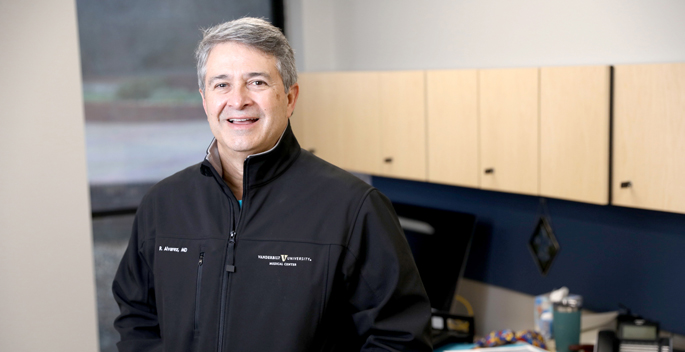
“You can imagine that in a critical care unit, what is happening at any given moment is unpredictable and patient care at the bedside is priority,” she said. “However, for a family member waiting at home for any news regarding their loved one, having someone who is totally dedicated to communicating to them is just as critical. The liaison allows the focus for the clinical team to be on the patient and takes over and provides needed attention to the patient’s family. It’s holistic, compassionate care. The advanced practice provider teams noted this early during COVID care, and we really just followed their lead.”
Ronald Alvarez, MD, MBA, Betty and Lonnie S. Burnett Professor of Obstetrics and Gynecology and chair of the department, volunteered for a weekend in early December.
“I was happy to help out in any little way I could,” he said, adding that “the real heroes are the residents, fellows, faculty and nurses there on the frontlines. Whatever role I played was small.”
Alvarez said after years of treating patients with gynecological cancer he has learned to keep his emotions in check, and he did so when talking to families, but rounding with the ICU team and seeing patients his own age stirred up many emotions — “fear, sadness, tragedy and a little anger that we as a country didn’t mobilize to prevent this from escalating to such a high level.”
Bart Huddleston, MD, assistant professor of Clinical Physical Medicine and Rehabilitation, volunteered for three days in late December. He would round with the team shortly after 6 a.m., take notes, then go to a quieter place to call 16-18 family members each day.
Volunteering to communicate information to the families was a way to help the physicians and nurses in the COVID unit “who are putting their health at risk every day,” Huddleston said.
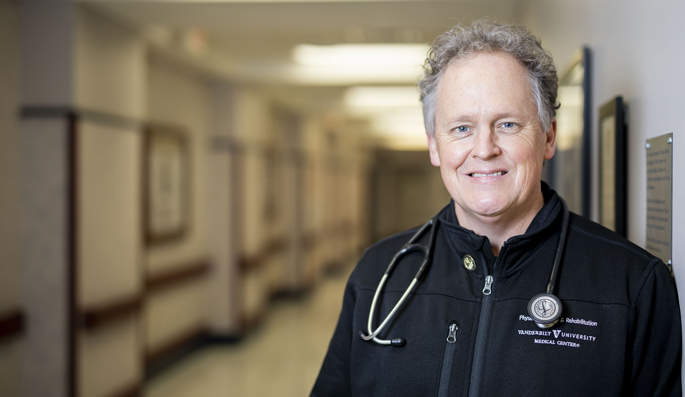
“I’m 56, I’ve been in practice for 24 years and done a lot of different things, but this was probably the most unique clinical experience I’ve had,” Huddleston said. “This liaison position is an amazingly wise addition to the process, to be able to communicate information to the families who are so desperate for information about their individual’s condition.”
Huddleston found that many families were well-versed about treatments and asked specific questions — whether the patient had received experimental medications like the antiviral Remdesivir and pointed questions about blood counts and kidney function.
“So many of these patients are intubated or sedated and the family can’t communicate with them, so communication is simply through numbers and metrics and changes in those. That becomes what they hinge hope or despair on — those particular changes that occur — and they’re always occurring.”
Huddleston said it was also important to think carefully about how information was conveyed since family members have a “heightened sense” and pick up on specifics like tone of voice.
“These were impactful conversations with family members,” said Huddleston who wrote a poem about one of his conversations with the husband of a woman in ICU. The man had lost his brother the month before to COVID. “In this circumstance I was the pivotal person trying to communicate hope in a very desperate circumstance. You’re not the primary provider. You’re not a member of the family. You’re this third party and how you convey the information is very important.”
I Need to Know
By Bart Huddleston, MD
Its early in the morning on MICU section D.
There is nothing normal about it, though; a place no one wants to be.
But they are gathered together early, embraced by each other’s love
For work they are compelled to give, though shielded, masked, and gloved.
There is a battle waging here, one of an earthly, infected strife;
And a team is warring bravely while machines support her life.
They awaken knowing the challenges, this day they are soon to face,
But choose to fight together in this unforgiving place.
A husband waits to touch her hand, it is the longest they have been apart.
So, I called to give some hope, I think, as this distance breaks his heart.
You can see in the eyes of her doctor, that hope is always near.
But sometimes behind the mask, I see, a gently falling tear.
“How is she doing today, Doctor? I really need to know.”
“We have not been a part in many years, oh I miss her so.”
“She talked to me today,” he said, “but she did not make much sense.”
“What is her oxygen level now, can you give me any hint?”
“She was not talking yesterday, so that is really good, right?”
But you know there are things that changed, deep within the night.
“I won’t know what to do,” he said, “if she must leave my side.”
“It took my brother, too.” And then he just sat and cried.
“Her doctors are giving it their best,” I say, as I hear fear in his voice.
I wish I could convey the compassion shown, because it is their choice.
I tell him, “I will be praying for the wisdom of her team.”
Of one thing I am sure, God’s not absent in the fight against COVID-19.
Is she reaching out to heaven, in her sedated state?
Is God gently reassuring her to be patient and simply wait?
Because for her, at least, is not time to leave this earthly life,
Yet for her next-door neighbor, the book soon is closing on his waning strife.
COVIC knows no friend or pattern, has no remorse for age or race.
Some will battle bravely and lose, others recover without a trace.
But I have seen God live through lives, serving her sick and gentle soul.
They are God’s living hands of love, … and that’s all I need to know.














